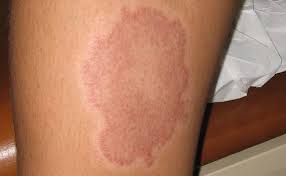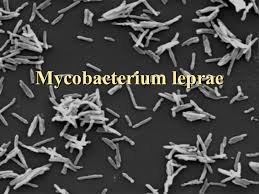AntiAmoebic Drugs
- Amoebiasis also called as Amoebic dysentery is an intestinal infection caused due to a protozoa called as “Entamoeba histolytica” and is characterized by dysentery associated with presence of blood and mucus in feces.
- This can be chronic or acute with patients showing varying degree of illness from no symptoms to mild dysentery to severe dysentery causing collapse and even death of the patient.
- Diagnosis is can be done by stool testing for presence of Entamoeba histolytica.
- Treatment is aimed not only for the patients with symptoms but also for the one those who are dormant carriers of the disease.
- The drugs which are used in treatment of the Amoebiasis are called as “Antiamoebic Drugs”
Life cycle of Entamoeba histolytica:
- Entamoeba histolytica exist in two life forms,
- Cysts: (Tough form, non-motile and can exist outside the body).
- Trophozoites: (Motile form, can not exist outside the body).
- Life cycle consists of following steps:

Entry of cysts in the body:
- Cysts enter into the body through contaminated food, contaminated water or through feces.
2. Formation of Trophozoites:
- Cysts after entering into the intestinal lumen gets converted into the motile Trophozoites.
- Trophozoites penetrates the intestinal wall and starts multiplying in colon cells often resulting in rupture of the colon cells causing local bleeding and hence triggering dysentery (blood itself is purgative).
- Sometimes trophozoites never invade the local colon cells instead they feed only on intestinal bacterial flora can may cause mild diarrhea.
3. Invasion into Systemic Circulation:
- Large concentrations of intestinal trophozoites leads to systemic invasion of trophozoites resulting into entry of trophozoites into other tissues like liver, lungs and even brain also.
4. Formation of Cysts:
- Trophozoites in intestine are slowly moved towards rectum where they gets converted into cysts and are discarded into the feces.
- And cycle continues.
Classification of Antiamoebic Drugs:
A. Tissue Amoebicides:
a) For both intestinal and extra intestinal form of Amoebiasis:I) Nitroimidazoles:
- Metronidazole (Metrogyl)
- Tinidazole (Flagyl)
- Ornidazole (Orni)
- Secnidazole.
- Satranidaole
- Emetine.
- Dehydroemetine.
- Chloroquin (Lariago)
a) Amides:
- Diloxanide furoate.
- Nitazoxznide.
- Quinidochlor.
- Iodoquinol.
- Tetracyclines.
Metronidazole
- Its a Nitroimidazole derivative used as Antiamoebic as well as an antibacterial drug.
- Its a prodrug and required get converted into its active form when reaches inside the microorganism.
- IUPAC Name: 2-(2-methyl-5-nitroimidazol-1-yl)ethanol.
Structure Activity Relationship:
- The 5-nitroimidazole ring with 3-methyl is essential for action.
- Substitution at N-1 with alkyl derivatives produced more active compounds like, Tinidazole, Ornidazole and Secnidazole.
- Tinidazole: 1-(2-ethylsulfonylethyl)-2-methyl-5-nitroimidazole
- Ornidazole: 1-chloro-3-(2-methyl-5-nitroimidazol-1-yl)propan-2-ol
- Secnidazole: 1-(2-methyl-5-nitroimidazol-1-yl)propan-2-ol
Mechanism of Action:
- After reaching the bacterial cell metronidazole is get reduced by “Electron Transport Chain” proteins of micro-organism like Ferridoxin.
- The Reduced form of Metronidazole is highly reactive and combines with bacterial DNA strand and breaks it down.
- Hence Metronidazole is supposed to act by destructing bacterial DNA strand, stopping its protein synthesis.
Adverse Effects / Side Effects:
- Nausea.
- Anorexia.
- Vomiting.
- Epigastric Distress.
- Thrombocytopenia.
Therapeutic Uses:
- Drug of Choice In treatment of Amoebiasis.
- In treatment of Giardiasis.
- In treatment of Trichomoniasis.
- In treatment of various mixed infections.
- In anaerobic infections.
- In treatment H. pylori infection along with antibiotics and PPI (Proton Pump Inhibitors).
- In treatment of Acne rosea.
Doses:
- Acute Intestinal amoebiasis: 800mg TDS for 10 days with luminal amoebicide.
- Mild Intestinal amoebiasis: 400mg TDS for 5-7 days.
- Hepatic Amoebiasis: 1G IV followed by 0.5 G IV every 8hrs for 10 days.
Emetine
- Its an Isoquinoline alkaloid obtained from roots of the plant “Cephalis ipecacuanha” belonging to family “Rubiaceae”.
- It has derived its name from its powerful emetic action and is a fast acting emetic.
- It is also a powerful amoebicide but is now reserved due to its side effect profile.
- IUPAC Name: (2S,3R,11bS)-2-[[(1R)-6,7-dimethoxy-1,2,3,4-tetrahydroisoquinolin-1-yl]methyl]-3-ethyl-9,10-dimethoxy-2,3,4,6,7,11b-hexahydro-1H-benzo[a]quinolizine.
Mechanism of Action:
- Emetine inhibits protein synthesis in eukaryotic (but not prokaryotic) cells by irreversibly blocking ribosome movement along the mRNA strand and inhibits DNA replication in the early S phase of the cell cycle.
Adverse Effects/ Side Effects:
- Nausea.
- Anorexia.
- Vomiting.
- Skeletal and cardia myopathies.
Diloxanide Fuorate:
- Diloxanide furoate is a prodrug which releases active drug “Diloxanide” in intestinal lumen.
- It is classified as luminal amoebicide.
- IUPAC NAME: [4-[(2,2-dichloroacetyl)-methylamino]phenyl] furan-2-carboxylate.
Mechanism of Action:
- Its exact mechanism of action is not known however, as it has structural similarity with “Chloramphenicol” it is supposed to act by inhibiting protein synthesis of the amoeba.
Adverse Effects / Side Effects:
- Nausea.
- Anorexia.
- Vomiting.
- Flatulence.
Idoquinol
- Its a 8-Hydroxy Quinoline derivative.
- It is poorly absorbed from GIT and largely remains in intestinal lumen.
- It acts by chelation of Ferrous ions essential for amoeba’s metabolism.
- It is considered as drug of choice for asymptomatic amoebiasis.
- IUPAC Name: 5,7-diiodoquinolin-8-ol.
- It is well tolerated only complication is gastric cramps.
- Its other sister compound having same activity potential is Cleoquinol.

- IUPAC Name: 5-chloro-7-iodoquinolin-8-ol.
Labels: Medicinal Chemistry, Pharmacology














